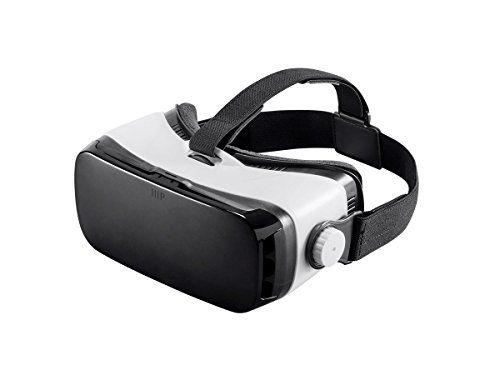

- #Accupix mybud 3d viewer hmd glasses 100 inch review serial#
- #Accupix mybud 3d viewer hmd glasses 100 inch review full#
- #Accupix mybud 3d viewer hmd glasses 100 inch review tv#
Low-cost HMD devices are available for use with 3D games and entertainment applications.
People without brain injury are able to track the moving object with smooth pursuit eye movements and correct trajectory. In visual tracking tests, a HMD unit with eye tracking ability shows an object moving in a regular pattern.

As of 2010, the use of predictive visual tracking measurement to identify mild traumatic brain injury was being studied. Research universities often use HMDs to conduct studies related to vision, balance, cognition and neuroscience. There are also applications in surgery, wherein a combination of radiographic data ( X-ray computed tomography (CAT) scans, and magnetic resonance imaging (MRI) imaging) is combined with the surgeon's natural view of the operation, and anesthesia, where the patient vital signs are within the anesthesiologist's field of view at all times. Head Mounted Display systems are also used in the maintenance of complex systems, as they can give a technician a simulated x-ray vision by combining computer graphics such as system diagrams and imagery with the technician's natural vision (augmented or modified reality). HMDs are predominantly used for single-person interaction with the design, while CAVEs allow for more collaborative virtual reality sessions. The use of HMDs for VR is seen as supplemental to the conventional use of CAVE for VR simulation.
#Accupix mybud 3d viewer hmd glasses 100 inch review full#
By enabling engineers to interact with their designs in full life-size scale, products can be validated for issues that may not have been visible until physical prototyping. Virtual reality, when applied to engineering and design, is a key factor in integration of the human in the design. Engineering Įngineers and scientists use HMDs to provide stereoscopic views of computer-aided design (CAD) schematics. Vuzix is currently working on a system for PCAS that will use holographic waveguides to produce see-through augmented reality glasses that are only a few millimeters thick. The Defense Advanced Research Projects Agency ( DARPA) continues to fund research in augmented reality HMDs as part of the Persistent Close Air Support (PCAS) Program.
#Accupix mybud 3d viewer hmd glasses 100 inch review serial#
The LE has a low power consumption, operating on four AA batteries for 35 hours or receiving power via standard Universal Serial Bus (USB) connection. The design is optimized to provide high definition data under all lighting conditions, in covered or see-through modes of operation. The LE has see-through ability and can be used as a standard HMD or for augmented reality applications. The self-contained color monocular organic light-emitting diode (OLED) display replaces the NVG tube and connects to a mobile computing device. In 2005, the Liteye HMD was introduced for ground combat troops as a rugged, waterproof lightweight display that clips into a standard U.S. Recent applications have included the use of HMD for paratroopers. Military, police, and firefighters use HMDs to display tactical information such as maps or thermal imaging data while viewing a real scene. These are usually fully integrated with the pilot's flying helmet and may include protective visors, night vision devices, and displays of other symbology. Ruggedized HMDs are increasingly being integrated into the cockpits of modern helicopters and fighter aircraft.
#Accupix mybud 3d viewer hmd glasses 100 inch review tv#
In 1962, Hughes Aircraft Company revealed the Electrocular, a compact CRT(7" long), head-mounted monocular display that reflected a TV signal in to transparent eyepiece. Air Force flight equipment technician testing a Scorpion helmet mounted integrated targeting system Combining real-world view with CGI can also be done electronically by accepting video from a camera and mixing it electronically with CGI. This method is often called optical see-through. Combining real-world view with CGI can be done by projecting the CGI through a partially reflective mirror and viewing the real world directly. This is sometimes referred to as augmented reality (AR) or mixed reality (MR). Some HMDs can allow a CGI to be superimposed on real-world view. Most HMDs can display only a computer-generated image, sometimes referred to as virtual image. HMDs differ in whether they can display only computer-generated imagery (CGI), or only live imagery from the physical world, or combination.

Some vendors employ multiple micro-displays to increase total resolution and field of view. The display units are miniaturized and may include cathode ray tubes (CRT), liquid-crystal displays (LCDs), liquid crystal on silicon (LCos), or organic light-emitting diodes (OLED). An eye tracking HMD with LED illuminators and cameras to measure eye movementsĪ typical HMD has one or two small displays, with lenses and semi-transparent mirrors embedded in eyeglasses (also termed data glasses), a visor, or a helmet.


 0 kommentar(er)
0 kommentar(er)
